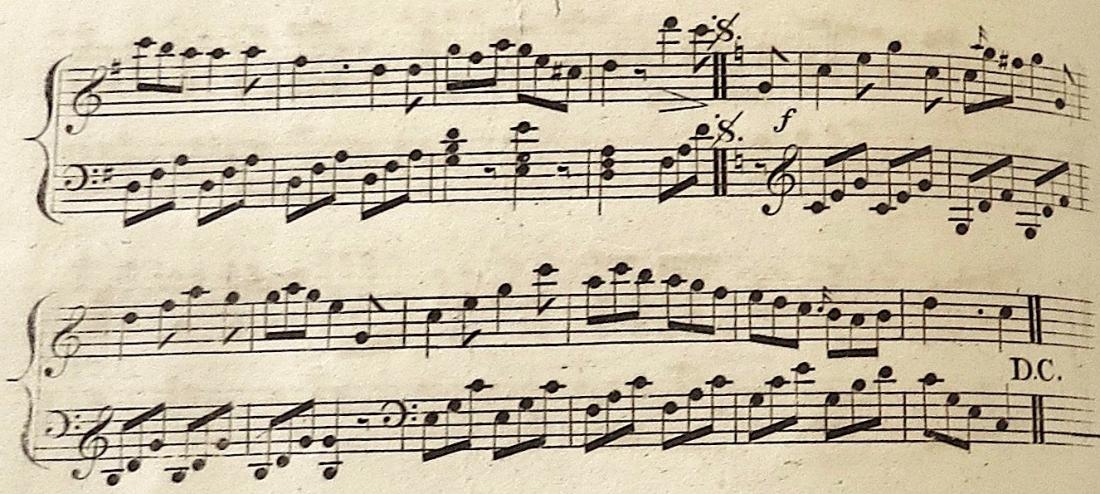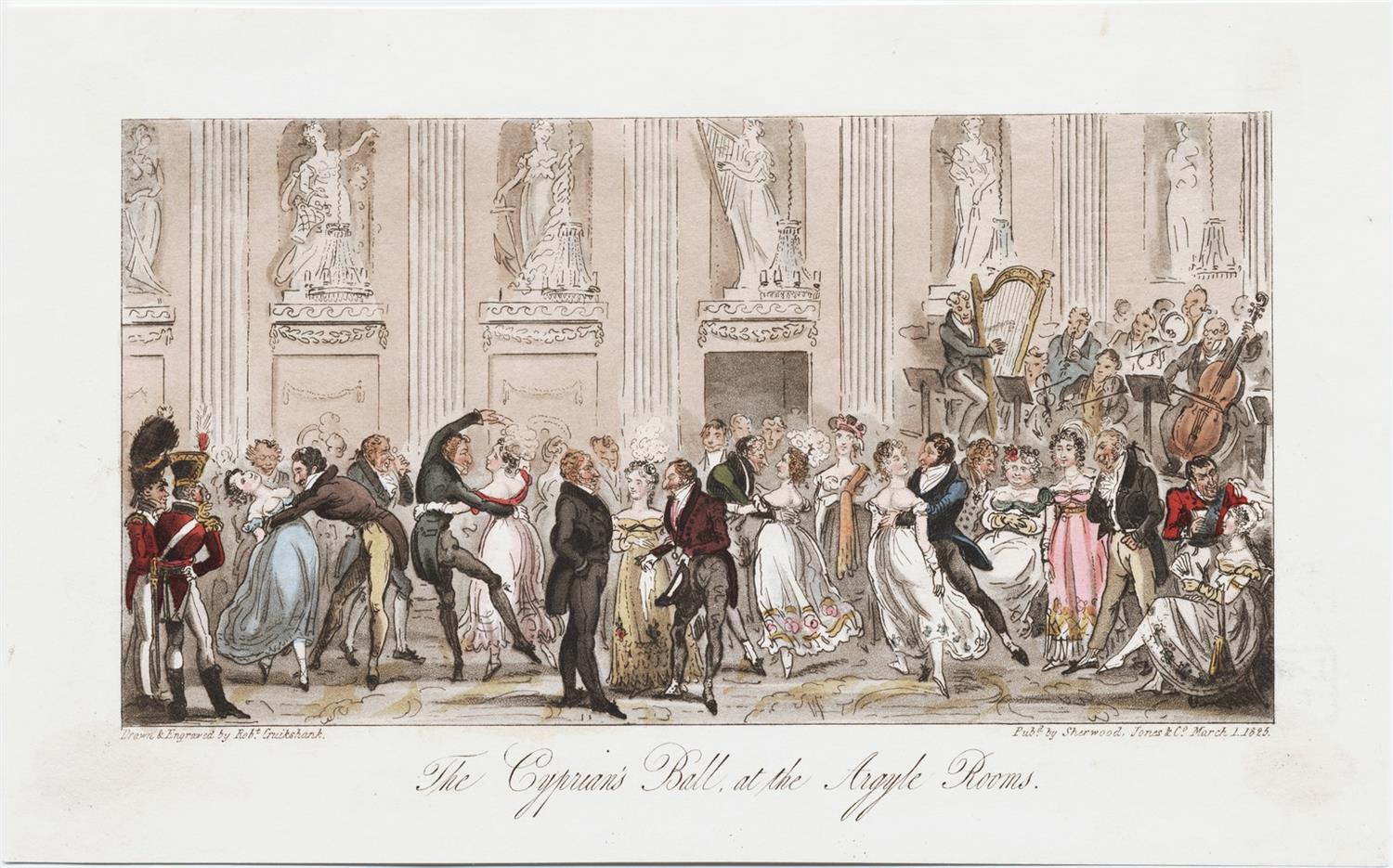
J. Paine: 12th Set of Quadrilles (1819)
Paine of Almack’s No. 12 [MS] Quadrilles Waltzes &c. as Performed at the above Rooms, with their Proper Figures in French & English. Arranged for the Piano Forte & Respectfully Dedd to the Nobility and Subscribers at Almacks by Jas. Paine (London: Falkner, [1819]).
La Belle Flamand – La Tambour de la Garde – L’Aimable – La Caprice de Vauxhall – La Nouvelle Fantasia – [Lady Castlereagh’s Favorite Polonoise]
Image credit: 2008TW-2163. Houghton Library, Harvard University.
To download mp3 files either click on the three dots or right-click on the player and choose the save/download option.
Recording Details:
Rikki Wolpowitz - flute
Peter Moutoussis - horn
Robert Percival - bassoon
Taisia Sandetcaia and Wiebke Thormählen - violins
Joseph Crouch - cello
Recorded at the Royal College of Music, London, 20 May 2021
SCORE: Paine's 12th Set of Quadrilles
PARTS: Paine's 12th Set of Quadrilles
James Paine was the leader of one of the most sought after dance bands in early nineteenth-century England. His name became synonymous with Almack’s Assembly Rooms, one of London’s most exclusive venues. He published numerous sets of quadrilles arranged for piano or harp and sometimes violin, which clearly catered for the domestic market. These sets combined five or six individual quadrilles (which each had their own figures and titles) and sometimes included finishing waltzes or polonaises. The title pages of the quadrilles unabashedly speak to luxury and fashion – by announcing “Directions to each Dance as now Performing at” several elite venues, they advertise their immediate social currency but also their social selectivity. The scores undoubtedly transmitted part of the sound of Almack’s to a much wider audience, the nineteenth-century equivalent of recordings from the poshest dance club in town.
The title page for Paine’s 12th set of quadrilles incorporates part of the Almack’s experience, featuring an engraving representing designs that were chalked on the floor for a costume ball. However, despite its visual appeal, this was a clear case of recycling. The 12th set was advertised in the York Herald on 6 February 1819, a full year after the designs first appeared on Paine’s 9th set of quadrilles. The costume ball itself had been held in mid 1817 which included five sets of quadrilles representing different nationalities; these also appeared on the title page, but were now no longer relevant (Cooper 2015).
Despite the prominence of Paine’s band, little is currently known about its make-up. Two days prior to the advertisement of the 12th set of quadrilles, his band played for a ball in Sevenoaks which included “the addition of a famous flageolet player”, likely to have been Hubert Collinet, placing the flageolet firmly within the sphere of instrumental colour possibilities. Iconography from this period, such as George Cruikshank’s La Belle Assemblée and Isaac Robert Cruikshank’s Cyprian’s Ball at the Argyle Rooms, shows bands consisting of strings with wind instruments such as bassoon, flute, clarinet or oboe, in addition to French horn, harp and sometimes percussion instruments. While Paine’s band could number more than 20 performers, for private balls in London and on country estates this was reduced to 9-10 players. The arrangement for flute, bassoon, horn, two violins and basso gives a good approximation of such bands at the smaller end, particularly if they were travelling.
The copy we used is part of a bound volume of piano music, largely consisting of dance compositions, which is labelled “Mrs T. Hutton”. This is possibly Elizabeth Chaytor of Spennithorne Hall in Yorkshire, who married Timothy Hutton of Clifton Castle in 1804. This is a later issue of the quadrilles as the catalogue of Paine’s works after the title page lists quadrilles up to the 16th set, dating it to around 1821.
Further Reading:
Cooper, Paul. 2015. “James Paine, of Almack’s (1778-1855).” January 16, 2015. https://www.regencydances.org/paper010.php
Newspaper References:
Ball at Sevenoaks: Morning Post 8 February 1819

Isaac Robert Cruikshank, ‘The Cyprian’s Ball, at the Argyle Rooms’ in Charles Molloy Westmacott’s The English Spy ([London]: Sherwood, Jones & Co., 1825), courtesy of The Lewis Walpole Library, Yale University.
